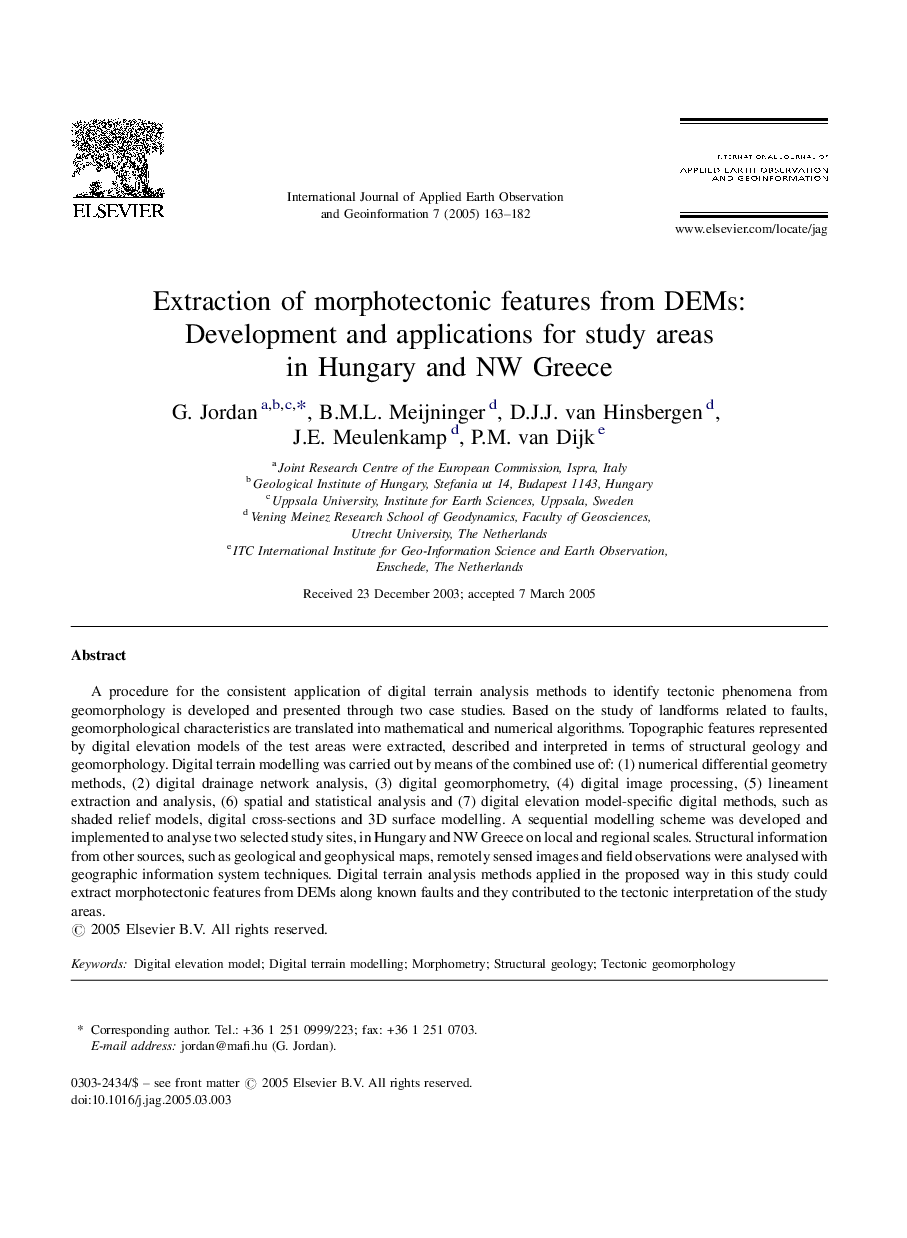| Article ID | Journal | Published Year | Pages | File Type |
|---|---|---|---|---|
| 10115615 | International Journal of Applied Earth Observation and Geoinformation | 2005 | 20 Pages |
Abstract
A procedure for the consistent application of digital terrain analysis methods to identify tectonic phenomena from geomorphology is developed and presented through two case studies. Based on the study of landforms related to faults, geomorphological characteristics are translated into mathematical and numerical algorithms. Topographic features represented by digital elevation models of the test areas were extracted, described and interpreted in terms of structural geology and geomorphology. Digital terrain modelling was carried out by means of the combined use of: (1) numerical differential geometry methods, (2) digital drainage network analysis, (3) digital geomorphometry, (4) digital image processing, (5) lineament extraction and analysis, (6) spatial and statistical analysis and (7) digital elevation model-specific digital methods, such as shaded relief models, digital cross-sections and 3D surface modelling. A sequential modelling scheme was developed and implemented to analyse two selected study sites, in Hungary and NW Greece on local and regional scales. Structural information from other sources, such as geological and geophysical maps, remotely sensed images and field observations were analysed with geographic information system techniques. Digital terrain analysis methods applied in the proposed way in this study could extract morphotectonic features from DEMs along known faults and they contributed to the tectonic interpretation of the study areas.
Keywords
Related Topics
Physical Sciences and Engineering
Earth and Planetary Sciences
Computers in Earth Sciences
Authors
G. Jordan, B.M.L. Meijninger, D.J.J. van Hinsbergen, J.E. Meulenkamp, P.M. van Dijk,
